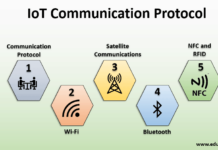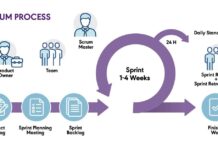Many people dislike meetings, but quality meetings are essential. They allow leaders to make crucial decisions and address pressing issues. Meetings can either be very useful or significant time-wasters; there is no in-between.
To have fruitful meetings, four core disciplines are necessary:
- Be Punctual: Set specific meeting times, such as “I will meet you at 10:20,” and consistently honor that commitment. This builds trust.
- Create an Agenda: The agenda should outline the meeting’s purpose, the necessary participants, and the estimated duration. Designate someone responsible for preparing the agenda. End the meeting as soon as you achieve your objectives.
- Focus on a Single Burning Subject: Limit all meetings to one main topic to ensure clarity. Invite only necessary participants, allowing employees ample time for focused work, especially designers or coders who require uninterrupted concentration. Consider the ripple effects and wasted hours of a recurring meeting. By concentrating on one topic, you serve the whole audience instead of only engaging a part during discussions.
- Define and Distribute Action Items: Ensure clear action items to address once the meeting concludes. Inform secondary audiences about decisions made during the meeting.
Relevant Participants
Every meeting needs a well-defined cast of characters. Ensure everyone involved is engaged and provides input on the topic. Frequently reassess the participants and invite guest speakers to keep discussions dynamic.
Who Should Be Informed Before the Meeting?
Begin with those influential in driving buy-in for changes, followed by those who will implement them. Others need not be informed on day one. Avoid inviting unnecessary attendees, and as meetings evolve, consider dropping participants who are not engaged.
Including junior staff in senior meetings can be uplifting, fostering their development and morale.
Pre-Meeting Preparation
Send the Agenda in Advance
All meetings should have an agenda. Distribute it a day before and get everyone thinking. Review action items from the previous meeting and remove items that have been completed. Add new topics to keep the conversation fresh, but remember that this is a draft until it is finalized.
Establish clear goals with a rationale for clarity. Your agenda must include the topic, time allocation for each point, prioritized items, and expected outcomes. Communicate attendance expectations.
Allocate Time Slots
Coordinate a time that suits everyone. All meetings should be regular, productive, and utilize time wisely. Calculating your meeting duration based on agenda points will help you stay on track.
Shorten Meetings
Aim for short, efficient meetings, such as a 10-15-5 format for weekly one-on-ones: 10 minutes for updates from the previous week, 15 minutes for significant events, and 5 minutes for action items. After estimating the duration, reduce it by 5% to 10% to encourage efficiency. Ideally, keep meetings to 20 minutes and calls to 5 minutes; longer discussions often waste time.
Implementing a policy that limits meetings to 15 minutes fosters a culture of bluntness and accountability, opening up communication channels and making meetings more effective.
During the Meeting
Start with a Statement
Arrive early, especially if you are not the facilitator. If you are the facilitator, have the agenda and executive summary ready. If no one arrives within 5 minutes, make a call to check on the situation.
Encourage cameras to be on during virtual meetings. Whether in person or online, presentation matters; dress well and hone your speaking skills.
Kick off the meeting with positive news to minimize questions and maintain engagement. Reinforce the purpose and problem statement, visually highlighting goals. Position yourself strategically in relation to note-takers or key participants to ensure you are noticed.
Be an Emotional Contagion
Foster a positive atmosphere by showing appreciation and inspiration. This can help create a more collaborative and productive meeting environment.
- Show Appreciation and Inspiration
At the beginning of each meeting, spend five to ten minutes highlighting the contributions of specific team members. Share uplifting quotes, songs, and stories to inspire the group.
2. Monitor the Mood
Emotions can spread quickly; negative comments can drain the energy of the meeting and stifle the flow of ideas. Always pay attention to the emotional atmosphere in the room. Keep topics from one meeting separate from another to avoid dragging negative emotions into new discussions, especially with new participants.
3. Be Careful with Your Word
What you say matters. Misunderstanding or mismanagement of a situation can have negative consequences. Ensure your level of enthusiasm matches your commitment to the topics discussed.
4. Avoid Predictability
Assess your meeting format. Do you go around the table for each person to share, or do you dominate the conversation and leave minimal time for questions? If people are distracted by devices or multitasking, it may indicate that your meetings have become too predictable.
To innovate, invite guest speakers, shorten the meetings to around 18 minutes, or hold standing and walking meetings. Change seating arrangements to create a fresh dynamic. Incorporate humor to increase engagement and foster more ideas. Utilize provocative questions to stimulate thinking.
5. Implement Effective Agendas
Use Information, Study, and Action Items (ISA) for your agendas. Start with INFO items, followed by STUDY items (thoughts for potential change; keep these under review for a few weeks before moving them to the Action items), and then address ACTION items. Discuss quick points first and reserve longer discussions for another meeting.
6. Encourage Feedback
Solicit input before and after meetings from quieter members who may not voice their thoughts during discussions.
7. Approach Decision-Making Wisely
For productive meetings, assign a lead, put questions on a board, and have everyone write down their answers. Prioritize ideas by allocating 3 points for first choices, 2 for second, and 1 for third, then tally the results. Consider using Planning Poker to engage the entire team effectively.
8. Changing Stances on Issues
Give time for opinions to settle. Present any new data that influenced your change of position, providing compelling reasons for the shift. Never change your stance within the same meeting; wait a few days to ensure clarity.
9. Handle Decisions Responsibly
It’s perfectly fine to say, “I need to think about this and get back to you.” This response is particularly important for introverted participants.
10. Ending the Meeting
Just as you start strong, ensure you end on a high note. Utilize a wave of three positive points, followed by a negative one, then three more positives, and another negative if necessary. This rhythm should apply throughout the meeting. Always conclude positively.
11. Action Items and Follow-Up
Close meetings with a clear follow-up plan. Send out typed minutes on the same day. Taking comprehensive notes will make future meetings easier. Listen attentively, ensuring everyone leaves with clear action plans. Use straightforward language, be confident, and be precise about expected outcomes. Share pertinent information with anyone affected by the meeting’s decisions.
Bonus Tip
Committee meetings should demonstrate a significant impact within the first two to three months; if they don’t, consider dissolving them.











